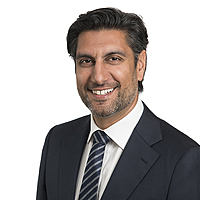Outlook for risk assets improves but caution remains
In the first half of 2018, we have seen volatility return to markets, a breach of the much anticipated 3% handle for 10-year US Treasuries, and an agreed summit between North and South Korea. As we continue to tread later into this cycle, investors seeking a consistent long-term real return must balance the need for returns with capital preservation.
Developed market equity valuations remain high
Equity valuations in most major developed market countries remain high, with the US appearing the most expensive, even on a forward looking basis. On a relative basis, Australian equities have performed strongly, lifting the forward P/E ratio from late last year. Europe looks more attractive from a valuation perspective. Europe has strung together 19 consecutive quarters of growth and prospects for earnings growth remain healthy, so we still see selective value in European equities, despite political instability.
Emerging markets equities look more attractive from a valuation perspective
While volatility has increased in emerging markets, current levels do offer a chance to increase exposures. Historically, emerging markets have been exposed to a weaker US dollar, but over time emerging market economies have been able to borrow in their local currencies and move away from hard currency borrowing, which we believe lowers their vulnerability, relative to previous crises in those regions.
Government bond yields should trend higher
Developed market government bonds are breaking out of the multi decade bull-run, and we have started to see the much anticipated rise in both short and long term yields, as evidenced by the US 10-year bond breaking through the 3% level. The path to higher yields is expected to continue to trend higher after a period of consolidation following the recent volatility. Some inflation-linked bonds offer value, and we continue to hold these in Australia, with the risk of higher inflation than we have experienced in the last couple of years. For global investors looking for a real return (i.e. a return over inflation), fixed income provides little direct help.
Emerging market debt offers relatively attractive risk-reward
Emerging market credit continues to offer relatively good risk-reward, with global trade increasing and commodity prices underpinning expansion, and the higher yields offering a reasonable carry return to hold the higher volatility expected from these assets. We continue to allocate our duration exposure to emerging market bonds, both hard and local currency. There are few places where high real yield is available without credit risks (countries like Brazil, Mexico, and Russia). Furthermore, countries that have to borrow because they save less than they invest have to pay a higher interest rate and are often more economically vulnerable to shocks. Our global investment universe allows us to invest in countries where the return looks attractive on a relative basis.
Credit market have pockets of value – prefer investment grade credit, especially following recent spread widening
Fundamental drivers of fixed income markets in 2018 suggest that yields should continue to rise, particularly if inflation increases. Credit, in particular investment grade, has not had a positive start to 2018 within this backdrop. However, we still see value in high quality global corporate issuers, particularly following recent spread widening. We do not hold any high yield after selling down this exposure in late 2017.
Further insights
It has been well documented that asset allocation decisions are the dominant driver of overall portfolio returns - and that investment challenges are rarely addressed with a single asset class. Find out more
2 topics

